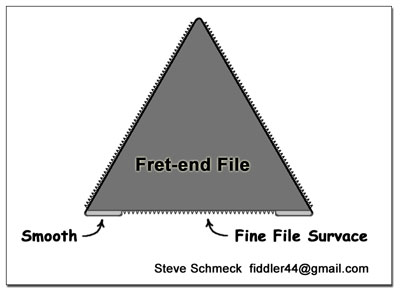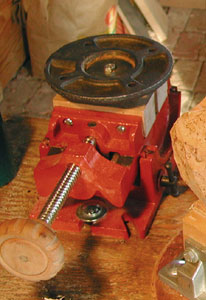|
Art
Steve...
Bowls
'In
Progress'
Photo Archive
Instruments
Spoons
Bio
Sue...
Watercolors
Fingerweaving
Boxes
Bio
How to Order
Contact Us
|
Stewart-MacDonald Tools & Tool Ideas
by Steve Schmeck
First, an idea for a new tool I'd like to see someone make.
Here is what I used on my most recent re-fret job to level and give
preliminary shape to the fret ends:

Your basic triangular file with painter's tape protecting the edges
- leaving an effective, safe cutting surface preventing
damage to the edges of the fingerboard.
Here is a drawing of the proposed tool:

Stewart MacDonald, please make these! Thanks.
And on
another subject, this is my current favorite vise for working on
carvings...
|
|
 |
This vise has worked great! It has proved to be
super-strong, quiet (no rattles) and easy and quick to use.
With a
quarter-turn of the round knob the work can be rotated 360
degrees and with another quick turn, locked securely. A flip
of the tilt-locking lever and the vise can be tilted from
horizontal to nearly vertical. When tilted the bowl hangs
out over the edge of the bench and I can easily access the
back/bottom of a carving.
Below I've
described the fairly straight-forward modifications I've
made to this vise. |
|
The Carving
Process...
|